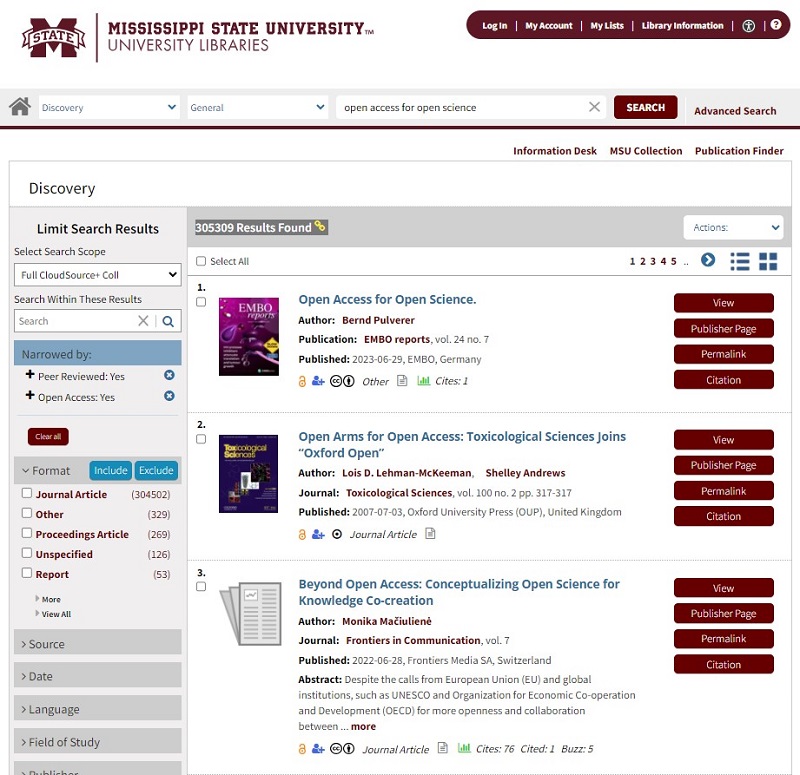Three Things Every Librarian Should Know About Open Access Content
As more academic journals embrace open access publishing models in response to shifting requirements from funders, open access content is playing an increasingly significant role in modern research.

 As more academic journals embrace open access publishing models in response to shifting requirements from funders, open access content is playing an increasingly significant role in modern research.
As more academic journals embrace open access publishing models in response to shifting requirements from funders, open access content is playing an increasingly significant role in modern research.
Making research results freely and openly accessible has the potential to transform scholarship by removing the barriers to knowledge. However, there are still many misperceptions about open access content and its use. Here are three things that every librarian should know about this important topic.
1. Open access content is just as authoritative as content from subscription-based journals.
Open access journals are subject to the same peer review process and publishing standards that apply to those produced under a subscription-based model, so there should be no question about the quality and reliability of open access content.
In fact, as government and other funding agencies update their policies to require federally funded research findings to be made openly accessible, open access content will comprise an increasingly larger percentage of scholarship.
“The quality of open access content is equal to the quality of what we have in our subscription databases,” says Linda Landi, electronic resources librarian for Fort Vancouver Regional Libraries in Washington.

2. Just because it’s “open” doesn’t mean this content is easily discoverable.
“The fact that it’s open access leads one to assume that the content is easy to find,” says Sara Teas, digital interfaces coordinator for Fort Vancouver Regional Libraries. “But I don’t think that’s the case.”
The Directory of Open Access Journals (DOAJ) maintains an extensive index of open access journals from around the world. However, an analysis from SirsiDynix reveals that the content available from these sources makes up only 16 percent of all open access content worldwide.
“The vast majority of open access content is published in hybrid journals, transformative publications, non-DOAJ open journals, and other sources,” explains Rick Branham, Vice President of Academic and Content Solutions for CloudSource, a new SirsiDynix platform. “However, most discovery platforms will not expose OA articles from hybrid journals unless the library subscribes to these journals,” Branham adds.
Without an easy way to aggregate all this content in one place, library patrons must look in many different places to find openly accessible materials. The 2021 article from Chris C. Bulock, “Finding Open Content in the Library is Surprisingly Hard” expounds on this conundrum.
3. Libraries are actually paying for a significant amount of open-access content.
With a growing number of agencies requiring open access publishing for the research they fund, many journals now publish a mix of open access and subscription-based content. In some cases, the percentage of open access content that a source such as Springer Nature publishes exceeds 50 percent.
This means that the content collected in most subscription databases contains a healthy percentage of open access articles along with proprietary content.
When Mississippi State University Libraries analyzed their collections, they found that more than 60 percent of the content in the proprietary databases they subscribed to consisted of open access articles, says Cathy Austin, interim director of resource management.
“It’s not necessary to be paying for content that’s freely available,” she notes. “That was definitely eye-opening.”

How CloudSource Can Help
CloudSource is a new content and discovery platform that enables libraries to change their whole approach to managing electronic resources.
CloudSource OA aggregates more than 60 million open access research articles and open education resources from hundreds of thousands of journals, ebooks, and electronic textbooks, pulling them together into a single, comprehensive index that makes it easy for users to find and access the full text of open content sources.
“We’re flipping discovery on its head by putting open content first,” Branham says.
When a user searches for a particular source, the platform looks to see if there’s an open access version or if the library already offers this source through an existing database subscription. If not, libraries can pay to offer on-demand access to the source for their patrons.
Often when a student is doing research, they’re not looking for one particular source, Branham says. Instead, they’re looking for general information about a topic, and the information they can find through open sources is sufficient for their needs. By using CloudSource to make millions of open access materials easily discoverable and supplementing these materials with on-off purchases of individual journal articles as needed, libraries can save money by eliminating the use of high-cost subscription databases.
Mississippi State University Libraries was able to cut its collections budget by 4 percent using this approach, Austin says. “We’re using the funding we have more strategically,” she notes. “Open access publishing is increasing exponentially, and it’s important to leverage this material—especially with costs rising.”
CloudSource launched at the end of 2021 and currently has 370 institutions representing more than 500 libraries live with the solution.
SPONSORED BY
RELATED
ALREADY A SUBSCRIBER? LOG IN
We are currently offering this content for free. Sign up now to activate your personal profile, where you can save articles for future viewing










Add Comment :-
Comment Policy:
Comment should not be empty !!!